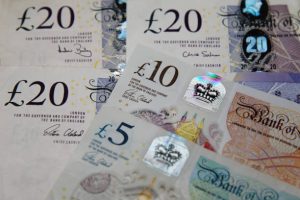Real estate investment can be a lucrative venture, but its success hinges on thorough financial analysis. To determine the viability of an investment property, investors need to evaluate various financial metrics, assess market conditions, and understand the property’s potential for income and appreciation. This article provides a comprehensive guide on how to analyze the financial
Real estate investment can be a lucrative venture, but its success hinges on thorough financial analysis. To determine the viability of an investment property, investors need to evaluate various financial metrics, assess market conditions, and understand the property’s potential for income and appreciation. This article provides a comprehensive guide on how to analyze the financial viability of a real estate investment property, including key metrics, analysis techniques, and comparative tables.
Understanding Key Financial Metrics

This image is taken from google.com
1. Gross Rental Income
Gross Rental Income is the total income generated from renting out a property before any expenses or deductions. This figure provides an initial snapshot of the property’s income potential. To calculate Gross Rental Income:
Gross Rental Income=Monthly Rent×12\text{Gross Rental Income} = \text{Monthly Rent} \times 12
2. Net Operating Income (NOI)
Net Operating Income is a critical metric for assessing the profitability of a property. It represents the income remaining after subtracting operating expenses from Gross Rental Income. The formula for NOI is:
NOI=Gross Rental Income−Operating Expenses\text{NOI} = \text{Gross Rental Income} – \text{Operating Expenses}
Operating Expenses include property management fees, maintenance costs, property taxes, and insurance.
3. Capitalization Rate (Cap Rate)
The Capitalization Rate measures the return on investment relative to the property’s value. It is calculated using the following formula:
Cap Rate=NOIProperty Value×100%\text{Cap Rate} = \frac{\text{NOI}}{\text{Property Value}} \times 100\%
A higher Cap Rate indicates a potentially higher return on investment, but it may also signal higher risk.
4. Cash Flow
Cash Flow is the amount of money generated from the property after all expenses, including debt service, are deducted from Gross Rental Income. To calculate Cash Flow:
Cash Flow=NOI−Debt Service\text{Cash Flow} = \text{NOI} – \text{Debt Service}
Debt Service includes mortgage payments and any other financing costs.
5. Return on Investment (ROI)
Return on Investment evaluates the profitability of an investment based on the initial investment amount. It is calculated as:
ROI=Annual Cash FlowTotal Investment×100%\text{ROI} = \frac{\text{Annual Cash Flow}}{\text{Total Investment}} \times 100\%
6. Debt Service Coverage Ratio (DSCR)
The Debt Service Coverage Ratio measures the property’s ability to cover its debt obligations with its NOI. The formula is:
DSCR=NOIDebt Service\text{DSCR} = \frac{\text{NOI}}{\text{Debt Service}}
A DSCR greater than 1 indicates that the property generates sufficient income to cover its debt payments.
Conducting a Comparative Analysis
When analyzing the financial viability of a real estate investment, comparing the property to similar properties in the market is crucial. This comparative analysis involves examining several factors:
1. Market Comparisons
Comparing the subject property with similar properties (comps) helps determine its competitive position in the market. Key metrics to compare include:
- Gross Rental Income
- NOI
- Cap Rate
- Property Value
- Operating Expenses
2. Property Features
Evaluate how the subject property’s features compare to comps, including:
- Location: Proximity to amenities, schools, and transportation
- Condition: Recent renovations or repairs
- Size: Square footage and number of units
3. Financial Performance
Compare financial performance metrics of the subject property with those of similar properties:
- Cash Flow: Compare to gauge how much income is generated relative to expenses
- Cap Rate: Analyze differences to assess investment risk and return
- ROI: Compare returns to determine the relative attractiveness of the investment
Analysis Table
The following table outlines key financial metrics for analyzing a real estate investment property:
| Metric | Formula | Description |
|---|---|---|
| Gross Rental Income | Monthly Rent × 12 | Total rental income before expenses |
| Net Operating Income | Gross Rental Income – Operating Expenses | Income remaining after operating expenses |
| Cap Rate | (NOI / Property Value) × 100% | Return on investment relative to property value |
| Cash Flow | NOI – Debt Service | Income after all expenses and debt payments |
| ROI | (Annual Cash Flow / Total Investment) × 100% | Profitability relative to the initial investment |
| DSCR | NOI / Debt Service | Ability to cover debt obligations with NOI |
Comparative Table
To provide a clearer picture of how a property stands in the market, use the following comparative table:
| Metric | Subject Property | Comparable Property 1 | Comparable Property 2 |
|---|---|---|---|
| Gross Rental Income | $24,000 | $22,000 | $25,000 |
| NOI | $18,000 | $16,000 | $20,000 |
| Cap Rate | 6.00% | 5.50% | 6.25% |
| Property Value | $300,000 | $290,000 | $320,000 |
| Operating Expenses | $6,000 | $6,000 | $5,000 |
| Cash Flow | $12,000 | $10,000 | $15,000 |
| ROI | 4.00% | 3.45% | 4.69% |
| DSCR | 1.50 | 1.40 | 1.60 |
Conclusion
Analyzing the financial viability of a real estate investment property requires a comprehensive evaluation of several key metrics and a comparative analysis with similar properties. By understanding and applying these metrics, investors can make informed decisions about the potential profitability and risks associated with a property. Using the tables provided can help in assessing how well a property performs in comparison to others in the market, guiding investors toward sound investment decisions.















